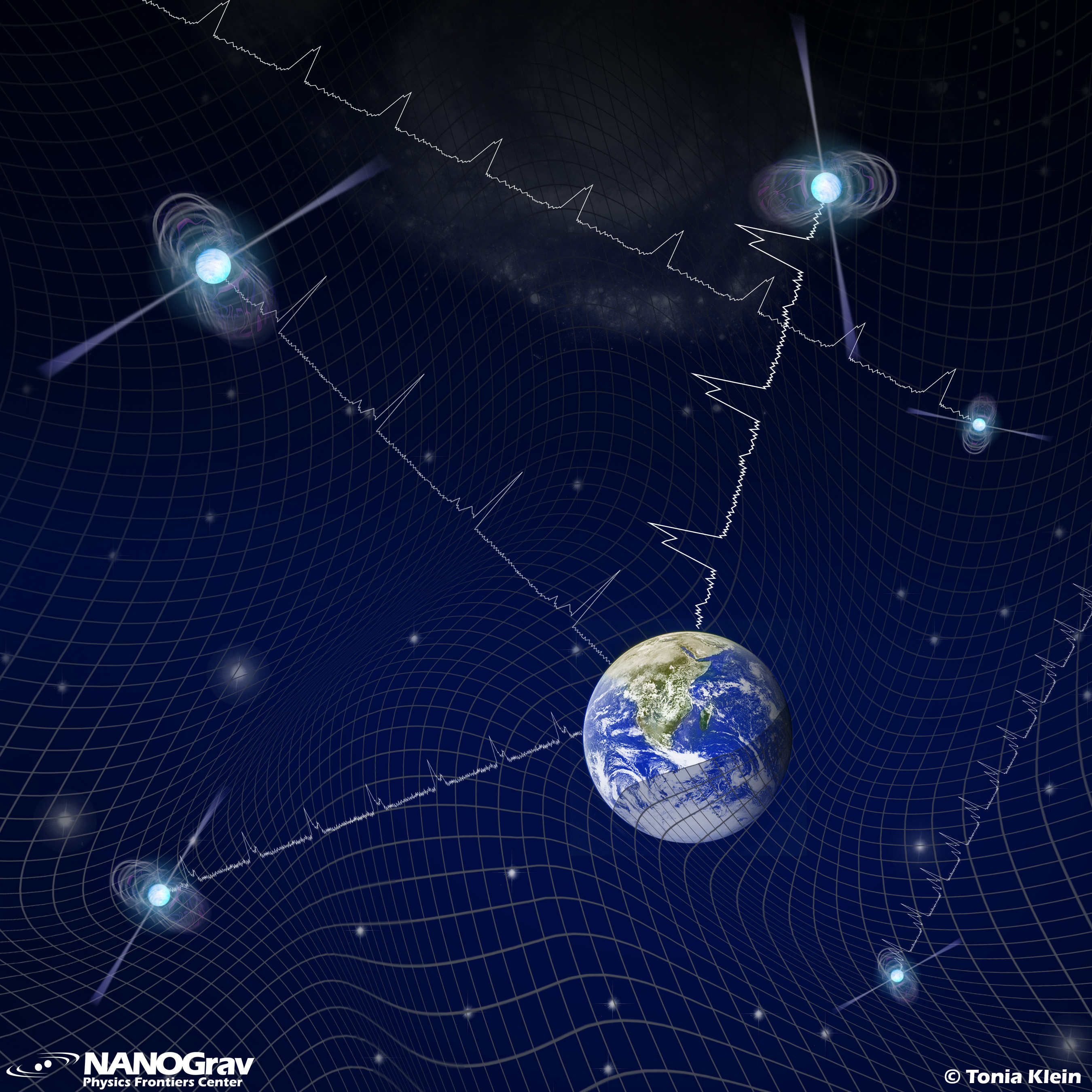The North American Nanohertz Observatory for Gravitational Waves (NANOGrav) collaboration found an intriguing low-frequency signal that may be attributable to gravitational waves. Gravitational waves are ripples in space-time caused by the motion of massive objects. NANOGrav searches for these waves by looking for how they effect pulsars -- small, dense stars whose regular rotation allows them to be used as Galactic clocks. NANOGrav is a collaboration of U.S. and Canadian astrophysicists, including UWM professors David Kaplan and Sarah Vigeland. The recently published results, led by UWM alum Joseph Simon (PhD 2017) used 13 years of observations to find what may be the first hints of gravitational waves from supermassive binary black holes in distant galaxies. Additional data, such as the upcoming NANOGrav 15-year data set, may be able to confirm that this signal is in fact coming from gravitational waves.
The work was published in The Astrophysical Journal Letters.
 Artist's conception of a pulsar timing array.
Credit: NANOGrav/T. Klein.
Artist's conception of a pulsar timing array.
Credit: NANOGrav/T. Klein.